
Six Steps of Successful brazing
- 1. Joint Design
- 2. Choice of Brazing Filler Metal Alloy
- 3. Pre-cleaning
- 4. Fluxing the Joint
- 5. Heating the Joint and Applying the Filler Metal
- 6. Removing the Flux Residues After Brazing
1. Joint Design
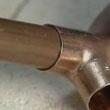
Brazed joints should always have a capillary gap into which the molten filler metal can flow. Joint strength will vary with the joint gap and the degree of overlap between parent metals. The optimum joint gap at brazing temperature is shown in the table of physical properties for each product.
Different expansion rates of the parent metals will affect the joint gap at brazing temperature. For lap joints use an overlap length of 3 to 4 times the thickness of the thinnest parent metal part in the joint.
For tubular parts of sizes up to 25mm in diameter the joint overlap should be equal to one tube diameter.
top2. Choice of Brazing Filler Metal Alloy
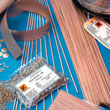
Alloys should be chosen on their suitability for a particular application.
Consideration should be given to the component design, the parent metals, the brazing process and the economics of the job.
The brazing filler metals that are easiest to use are the high silver, free flowing filler metals with low melting ranges.
Filler metal alloys with higher brazing temperatures and longer melting ranges are more difficult to use.
top3. Pre-cleaning
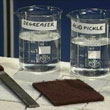
The components that are to be joined should be free from grease and any surface oxide prior to brazing.
Grease and oil are best removed using a degreasing solvent. Hot, soapy water may also be effective.
Surface oxide can be removed with a medium grade abrasive cloth. This will promote good bonding.
top4. Fluxing the Joint
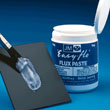
The choice of flux is as important as the choice of filler metal. The working range of the flux must be compatible with the brazing temperature. The flux must have suitable life at temperature and should be suitable for both the heating method and the parent metals. Ideally flux should be applied to both components before assembly and prior to heating. The flux must melt and become active below the melting point of the brazing alloy.
It must stay active right through the brazing cycle removing the oxides formed on the parent metals.
If the flux residues appear blackened and glassy the flux has probably been exhausted during heating. This could be because either insufficient flux has been used or the components have been overheated. Alternatively a flux with greater time and temperature stability should be used.
top5. Heating the Joint and Applying the Filler Metal
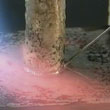
Several heating methods are used for silver brazing in air. They include hand torch, fixed burner, induction and resistance heating. In addition for torch or fixed burners different fuel gas combinations are available from oxy-acetylene, oxy-propane, through to air / natural gas.
For brazing it is essential that the parent metals be heated evenly to the correct temperature.
At the correct temperature for brazing the flux should be clear and flow over the joint area.
When brazing copper with an alloy from the Sil-fos™ and Copper-flo™ range the metal should be a dull cherry red indicating the correct temperature has been reached.
Brazing rod, strip or wire should then be touched onto the joint mouth when brazing temperature is reached.
Free flowing filler metal alloys will flow into and around the joint by capillary attraction.
A sluggish flowing filler metal alloy should be applied along the entire joint, building up a fillet.
Molten brazing filler metal always flows to the hottest part of the joint,
Heating should continue as the filler metal flows into the joint. For torch brazing indirect heating should be used.
Once brazing is complete heating should be discontinued.
top6. Removing the Flux Residues After Brazing
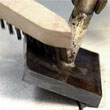
When the alloy has solidified the joint can be water quenched to help remove flux residues. During cooling care must be taken not to damage the component or cause cracking due to thermal shock.
It is important to remove flux residues after brazing. Specific details about how to remove flux residues can be found on the datasheet for each Johnson Matthey flux.
top

